The Power of Intentional Diversity: Beyond Race and Gender to a Richer Ideology of Thought
During a time where the concept of diversity is more widely discussed than ever before, it is imperative to understand that diversity is not merely a checkbox or a quota. It is not a goal to be achieved and then set aside. Instead, true diversity is an intentional, ongoing practice that encompasses far more than race and gender. It is a celebration of differences in age, perspectives, thought, insights, expertise and much, much more. It is a dynamic interplay that enhances creativity, drives innovation and fosters sustainable impact.
This article delves deep into why intentional diversity matters, how it extends beyond traditional boundaries, and the profound ways in which it enriches every aspect of our lives and work. We will explore the changing landscape of diversity, its significance in client and vendor relationships, and how embracing a broader definition of diversity contributes to a more resilient and innovative world.
” It is a celebration of differences in age, perspectives, thought, insights, expertise and much, much more.”

Intentional Diversity: More Than Just a Buzzword
Diversity has often been reduced to a narrow focus on race and gender. While these aspects are undeniably important, limiting diversity to these categories overlooks the rich, multidimensional nature of what it truly means to be diverse. Intentional diversity recognizes that differences in age, perspective, thought, expertise and even the types of partnerships we cultivate are just as critical to fostering a thriving, inclusive environment.
Intentional diversity is about consciously creating spaces where varied voices, experiences and ideas are not just present but are actively sought out and valued. It is about recognizing that each person brings a unique lens through which they view the world, and that this diversity of thought is what drives innovation and problem-solving in ways that homogeneity simply cannot.
This approach to diversity is not merely about representation; it is about the richness that comes from integrating different viewpoints and experiences into the fabric of our organizations, communities and relationships. It is an acknowledgment that the most innovative solutions often come from the intersection of diverse ideas and that true progress is made when we are willing to step outside of our comfort zones and embrace the unfamiliar.
The Changing Landscape of Diversity
As the world becomes increasingly interconnected, the landscape of diversity is evolving. No longer is it sufficient to focus solely on race and gender as markers of diversity. The complexities of our globalized society demand a broader, more nuanced understanding of what it means to be diverse.
For example, age diversity is becoming more critical as different generations bring varying perspectives and experiences to the table. In today’s workforce, we often see multiple generations working side by side, from Baby Boomers to Gen Z. Each generation has its own set of values, communication styles and approaches to work, all of which can contribute to a richer, more dynamic workplace. By embracing age diversity, organizations can tap into a wide range of experiences and insights that enhance decision-making and creativity.
Perspective diversity is another critical aspect that is often overlooked. This includes diversity of thought, which encompasses the various ways individuals approach problems, make decisions and think about the future. When teams are composed of people who think differently, whether due to their backgrounds, experiences or even cognitive styles, they are more likely to come up with innovative solutions to complex challenges. This is because they are not bound by a single way of thinking but can draw on a broad spectrum of ideas and approaches.
Diversity in expertise also plays a significant role in fostering innovation. Bringing together individuals with different areas of capabilities and skillsets can lead to breakthroughs that would not have been possible within a siloed approach. For example, when experts in technology, psychology, design and business collaborate, they can create products and services that are not only functional but also user-friendly, emotionally engaging and commercially viable. This cross-pollination of expertise is what drives industries forward and leads to the development of groundbreaking solutions.

The Importance of Diversity in Clients, Vendors & Solutions
Intentional diversity should not be confined to internal practices alone; it must extend to the way we choose our clients, vendors and solutions. The traditional approach of working with clients or vendors that fit a specific mold or align with our existing beliefs can lead to stagnation and limit our potential for growth. On the other hand, intentionally seeking out diverse clients, partners and vendors can open up new opportunities, foster creativity and enhance sustainability.
Diversity in clients means working with organizations or individuals from various industries, sectors and cultural backgrounds. This not only broadens your understanding of different markets but also forces you to think differently about how to meet their unique needs. For example, a tech company that traditionally serves only corporate clients might gain valuable insights by working with non-profits or educational institutions, leading to the development of products that are more adaptable and universally applicable.
Similarly, diversity in vendors can lead to more innovative and resilient supply chains. By working with vendors from different regions, industries and backgrounds, organizations can mitigate risks associated with relying on a single source. Moreover, diverse vendors often bring different perspectives and approaches to problem-solving, which can lead to more creative and effective solutions.
When it comes to solutions, diversity is equally important. Intentional diversity means considering a wide range of approaches and ideas when addressing challenges. Instead of relying on tried-and-true methods, organizations should be open to exploring new technologies, methodologies and practices that may initially seem unfamiliar or unconventional. This willingness to embrace diverse solutions is what drives innovation and keeps organizations competitive in an ever-changing landscape.

The Rainbow of Diversified Thought & Perspective
Imagine a world where every organization, community and individual operated within the confines of a single perspective. Creativity would stagnate, innovation would grind to a halt and the richness of human experience would be lost. Fortunately, this is not our reality. The world is a vast, colourful tapestry of diverse thoughts, perspectives and experiences, each contributing to the vibrant rainbow of human potential.
Diversity of thought is the cornerstone of progress. When we bring together people with different backgrounds, experiences and ways of thinking, we create an environment where ideas can collide, merge and evolve into something greater than the sum of their parts. This diversity of thought is what drives industries forward, solves complex problems, and creates products and services that truly meet the needs of a diverse global population.
Moreover, diversity of perspective is about bringing different ideas to the table as well as creating a culture where those ideas are valued and acted upon. It’s about fostering an environment where everyone feels empowered to contribute their unique insights, knowing that their voices will be heard and respected. This culture of inclusion is what allows organizations to tap into the full potential of their diverse teams, leading to better decision-making, greater innovation and more sustainable success.

A Business Case for Intentional Diversity
While the moral and ethical case for diversity is clear, it’s also important to recognize the tangible benefits that intentional diversity brings to businesses and organizations. Studies have consistently shown that diverse teams are more innovative, make better decisions and outperform their less diverse counterparts. This is because diversity brings a broader range of perspectives, which leads to more creative solutions and better problem-solving.
For example, a study by McKinsey & Company found that companies in the top quartile for gender diversity were 21% more likely to outperform on profitability, and those in the top quartile for ethnic diversity were 33% more likely to outperform on profitability. These findings highlight the strong correlation between diversity and business success, making it clear that intentional diversity is not just a moral imperative but also a strategic advantage.
Furthermore, intentional diversity is essential for sustainability. In a rapidly changing world, organizations that embrace diversity are better equipped to adapt to new challenges and seize emerging opportunities. Whether it’s responding to shifts in consumer preferences, navigating global supply chain disruptions or addressing social and environmental issues, diverse organizations are more resilient and better positioned for long-term success.

How to Cultivate Intentional Diversity
Cultivating intentional diversity requires more than just good intentions; it requires deliberate action and a commitment to continuous improvement. Here are some strategies for fostering intentional diversity in your organization, community or personal life:
Expand Your Horizons
Seek out opportunities to engage with people, ideas and experiences that are different from your own. This could involve attending events, joining networks or collaborating with individuals from diverse backgrounds. The more you expose yourself to diversity, the more you’ll recognize its value and integrate it into your work and life.
Create Inclusive Spaces
Ensure that your organization and community is a place where diverse voices are not only present but are actively encouraged to contribute. This might involve revising hiring practices, implementing diversity training or creating platforms where everyone feels comfortable sharing their ideas.
Challenge Assumptions
Be willing to question your own biases and assumptions about diversity. Recognize that diversity is not just about ticking boxes but about genuinely valuing and integrating different perspectives. This might mean rethinking how you approach decision-making, problem-solving, or even your definition of success.
Build Diverse Partnerships
Intentionally seek out diverse clients, vendors and partners. This will not only broaden your perspective but also open up new opportunities for growth and innovation. Remember that diversity in partnerships can lead to more resilient and adaptable solutions, helping you stay competitive in a rapidly changing world.
Measure and Improve
Regularly assess your progress in fostering intentional diversity and be open to making changes where needed. This could involve setting diversity goals, tracking key metrics and soliciting feedback from your team, clients and community. Continuous improvement is key to ensuring that diversity remains a priority and is effectively integrated into your work.

The Unstoppable Force of Intentional Diversity
Intentional diversity is a powerful force that transcends traditional boundaries of race and gender. It is a dynamic, multifaceted approach that encompasses age, perspective, thought, expertise and much more. By embracing intentional diversity, we unlock a wealth of creativity, innovation and resilience that drives progress and fosters sustainable success.
As we navigate an increasingly complex and interconnected world, let’ embrace the rainbow of diversified thought and perspective, recognizing that within this spectrum lies the power to transform industries, communities, organizations, people and lives.





